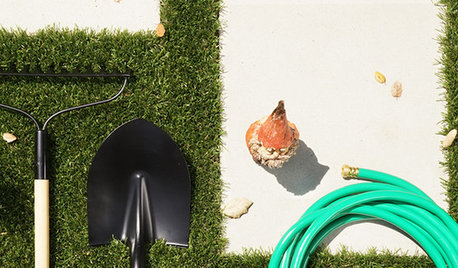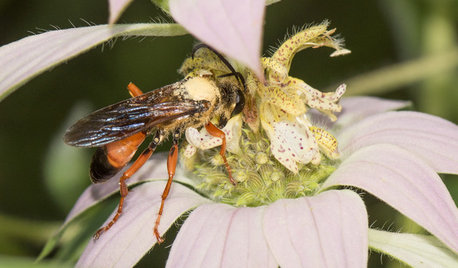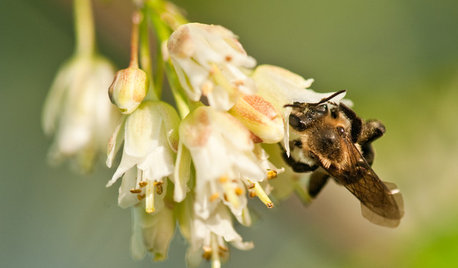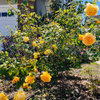How do you Overwinter Bands or 1 Gallons in Pots?
Lynn-in-TX-Z8b- Austin Area/Hill Country
10 years ago
Related Stories

LIFEYou Showed Us: 20 Nutty Home Fixes
We made the call for your Band-Aid solutions around the house, and you delivered. Here's how you are making what's broken work again
Full Story
SUMMER GARDENINGHow to Grow Basil
Bright color, quick growth and endless uses for cooking make this summer annual a winner in the garden or a pot
Full Story
SHOP HOUZZHouzz Products: Spring in the Garden
Have even more fun in the garden this spring with handy potting benches, outdoor accessories and tools from the Houzz Products section
Full Story
GARDENING FOR BUTTERFLIESBe a Butterfly Savior — Garden for the Monarchs
Keep hope, beauty and kindness alive in the landscape by providing a refuge for these threatened enchanters
Full Story
GARDENING GUIDESGreat Golden Digger Wasp: A Beneficial Flower-Visiting Insect
Introducing the great golden digger wasp, a colorful pollinator that also hunts foliage-eating insects
Full Story
GARDENING GUIDESGreat Design Plant: Staphylea Trifolia Shines in the Shade
Plant American bladdernut for 3 seasons of interest: spring flowers and striped brown branches and bladder-like seedpods in fall and winter
Full Story
HOUSEPLANTSIndoor Winter Gardens for Cheerier Days
Bring plants inside for drab-days mood boosting — not to mention cleaner indoor air and protection for your greenery
Full Story
GARDENING GUIDESBackyard Birds: Invite Entertaining Hummingbirds Into Your Garden
Hummingbirds — unique to the Americas — zip through open landscapes seasonally or year-round. Here’s how to attract them
Full Story
GARDENING GUIDESGarden Myths to Debunk as You Dig This Fall and Rest Over Winter
Termites hate wood mulch, don’t amend soil for trees, avoid gravel in planters — and more nuggets of garden wisdom
Full Story
GARDENING AND LANDSCAPINGHow to Make a Pond
You can make an outdoor fish paradise of your own, for less than you might think. But you'll need this expert design wisdom
Full StoryMore Discussions








AquaEyes 7a NJ
Poorbutroserich Susan Nashville
Related Professionals
Horsham Landscape Architects & Landscape Designers · Gainesville Landscape Contractors · Wakefield Landscape Contractors · Costa Mesa Landscape Contractors · Hayden Landscape Contractors · Natick Landscape Contractors · Newnan Landscape Contractors · Oak Forest Landscape Contractors · Sugar Hill Landscape Contractors · Cypress Swimming Pool Builders · Seabrook Swimming Pool Builders · Tampa Swimming Pool Builders · Cedar Rapids Siding & Exteriors · Ft Washington Siding & Exteriors · Levittown Siding & ExteriorsLynn-in-TX-Z8b- Austin Area/Hill CountryOriginal Author
roseblush1
AquaEyes 7a NJ
michaelg
roseseek
Lynn-in-TX-Z8b- Austin Area/Hill CountryOriginal Author
mad_gallica (z5 Eastern NY)
Lynn-in-TX-Z8b- Austin Area/Hill CountryOriginal Author
Lynn-in-TX-Z8b- Austin Area/Hill CountryOriginal Author
sandandsun
sandandsun
erasmus_gw
sandandsun
michaelg
Lynn-in-TX-Z8b- Austin Area/Hill CountryOriginal Author
michaelg
floridarosez9 Morgan
michaelg
Lynn-in-TX-Z8b- Austin Area/Hill CountryOriginal Author
roseblush1
Lynn-in-TX-Z8b- Austin Area/Hill CountryOriginal Author
floridarosez9 Morgan
roseblush1
Lynn-in-TX-Z8b- Austin Area/Hill CountryOriginal Author
roseblush1
michaelg
Kippy
Lynn-in-TX-Z8b- Austin Area/Hill CountryOriginal Author